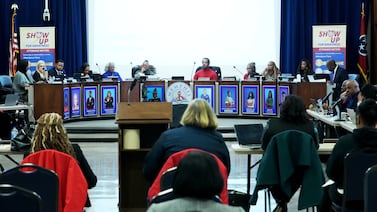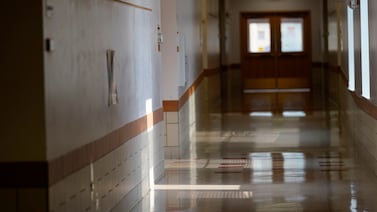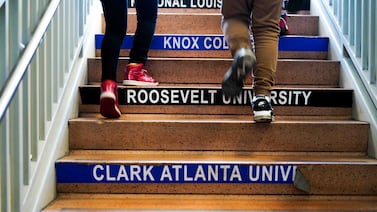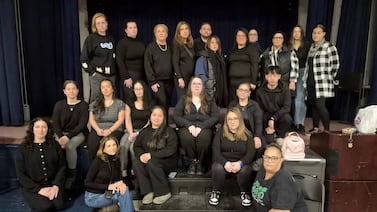Sign up for Chalkbeat Chicago’s free daily newsletter to keep up with the latest education news.
In Chicago, all children are guaranteed a spot in their zoned neighborhood school.
But Chicago Public Schools, the nation’s fourth largest district, also offers other choices, such as magnets, charters, and selective enrollment schools — and leaving your neighborhood to attend school has increasingly become the norm.
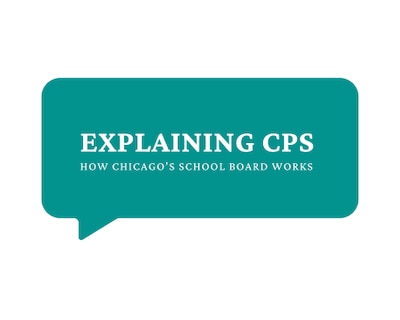
Roughly 44% of elementary school students enrolled at a school other than the one they were zoned for in the 2022-23 school year, while about 75% of high schoolers did the same, according to district data.
Twenty years ago, shortly after Chicago rapidly expanded school choice, only about a quarter of elementary school students enrolled in schools outside of their attendance area and 46% of high schoolers did the same.
The current appointed Chicago Board of Education — which will be replaced in January by a hybrid board made up of elected and appointed members — now wants to increase the percentage of students who go to school close to home. This new stated goal comes after the board expressed a desire last December to rethink the district’s school choice system. Board members said they want to invest more resources in neighborhood schools while also improving racial disparities at some of the district’s most sought-after schools that require applications and testing to get in.
Elected school board members will represent a varying number of different types of schools in their districts. Some have more magnet and selective schools than others, while others have a large percentage of charter schools.
Decades of policies approved by past school boards have created a school system where most students can and do attend beyond their zoned school, known more generally as school choice. District leaders, the school board, and even federal courts have also overseen the rules that govern who goes to which schools.
Today, Chicago families have a lot of options when it comes to public education: magnet schools, language academies, public Montessori, gifted centers, STEM schools, International Baccalaureate programs, and more. Students apply for different schools using an online system called GoCPS.
While hundreds of schools across the city enroll students based on where they live, dozens of schools and programs – such as the district’s 11 selective enrollment high schools – require students to take tests and meet other requirements for admission.
CPS also offers magnet programs, which often have a specialized curriculum and require an application, offering seats based on a lottery system. And then there are Chicago’s roughly 120 charter schools, which are publicly funded but privately managed and operate on contractual agreements with CPS. Charters also require an application to get in and also admit students by lottery.
The variety of options allows families to find the best fit for their child, but can be dizzying to navigate and has been criticized for being stressful and cumbersome.
Desegregation order paves the way for school choice
Chicago began offering public education in the 1840s, shortly after it became an official city, at just a few schools. The district officially established a board of education in the 1850s, and student enrollment rapidly grew as the city’s population ballooned.
By the 1960s, Chicago’s public schools were starkly racially segregated, due in part to racist housing policies that prevented Black families from finding housing in neighborhoods where white families lived. On the city’s South and West sides, schools serving mostly Black students were overcrowded and had fewer resources than schools in more affluent, white areas.
Families and civil rights activists protested segregation, even organizing a massive school walkout in 1963. The district’s superintendent at the time, James Redmond, attempted to spur integration by opening magnet programs.
By 1980, the federal government intervened and forced Chicago to sign a consent decree that required CPS to integrate its schools. Though some magnet and selective schools already existed, the federal court oversight prompted the district to create more. These schools were open to students from across the city and the district created racial quotas for schools in order to desegregate them.
Selective enrollment schools grew in the 1990s under then-CEO Paul Vallas, who more recently ran for mayor against current Mayor Brandon Johnson.
With the city’s pleading, a federal court ended the consent decree in 2009. The district replaced its racial quota system with a tier system, which assigns students a tier based on where they live using socioeconomic data about their neighborhood, including income, education levels, how many single-parent households there are, how many homes are owner-occupied, and how many households speak a language other than English. The district then prioritizes seats at selective schools, in part, based on each student’s tier. A decade after the consent decree ended, many of these selective schools had become more racially homogenous.
Today, school board policy stipulates that the first 30% of seats at selective enrollment schools go to kids with the highest scores on the High School Admissions Test. The rest of the seats are split up among those who scored the highest across each of the four tiers. Magnets, which do not require a test, split their seats across the four tiers.
School choice accelerates under education reform plan
In 2004, then-Mayor Richard M. Daley announced an ambitious plan to open 100 new schools under an effort to provide better school options. He called it Renaissance 2010.
As part of that initiative, the district began opening more charter schools, which were authorized by state law in 1997. The board approves contractual agreements with charter schools.
But in recent years, as district leaders have more closely scrutinized charter schools, boards under former Mayor Lori Lightfoot and Johnson have approved shorter terms for charters. For example, in January, the board renewed contracts for a majority of charters that were up for renewal by three or four years, even though state law allows extensions for up to 10 years.
Most of the schools that opened under Renaissance 2010 did not have neighborhood attendance boundaries and many had specialized academic programs.
Daley’s massive school reform effort came hand-in-hand with school closings. Annually, district officials would target schools with poor academic performance or under enrollment for closure.
Over the course of almost two decades, the appointed school board approved roughly 200 school closings, including 50 under former Mayor Rahm Emanuel in 2013, as it expanded the district’s market-based system of choice with specialty schools that families could choose over their zoned school.
Today’s leaders are pushing back on choice
Many of the magnet and selective enrollment schools meant to help desegregate the district never became integrated. Some have also become more segregated since federal court oversight ended.
Others are racially and economically integrated, but serve more white and Asian American students than the district as a whole and have been enrolling fewer Black students than in the past.
Additionally, families have for years said the high-stakes process of testing and applying to high school is stressful for their children.
On the campaign trail, Johnson promised to bolster neighborhood schools and make them places families want to enroll their children in.
In December, his appointed board promised to rethink school choice, signaling potential changes to admissions or other policies governing those schools. However, in its recently released strategic plan, the board did not call for any such policy changes. It did set goals to invest more resources in neighborhood schools and grow the percentage of children attending schools within their neighborhoods or community areas.
Reema Amin is a reporter covering Chicago Public Schools. Contact Reema at ramin@chalkbeat.org

